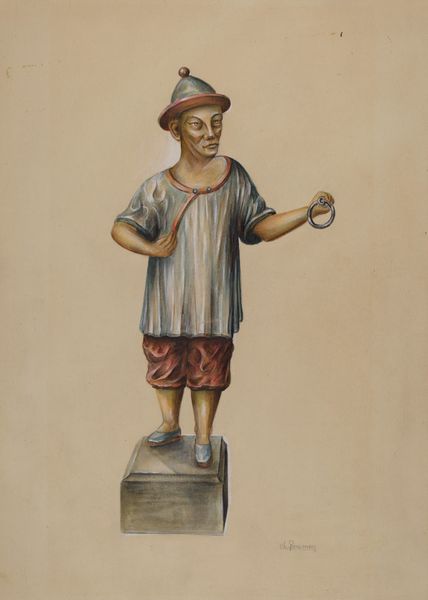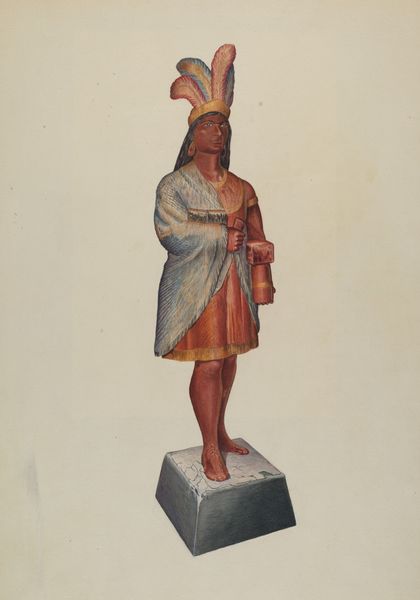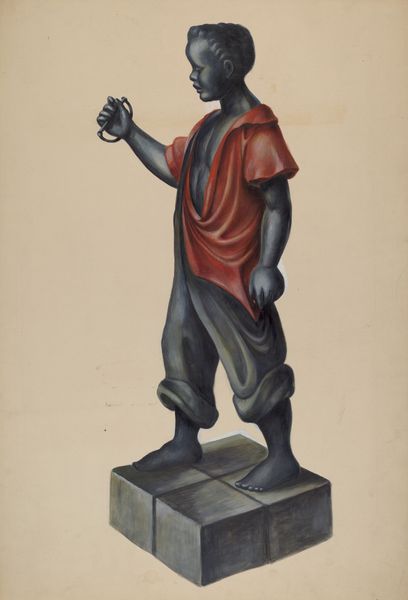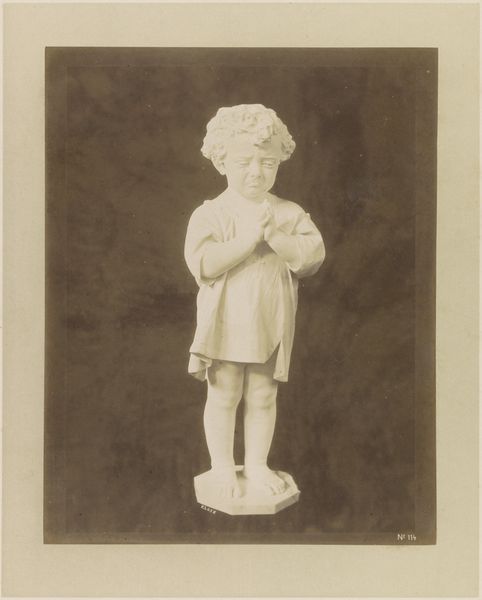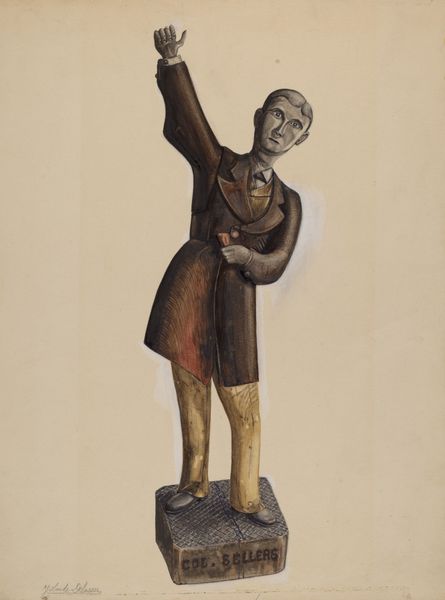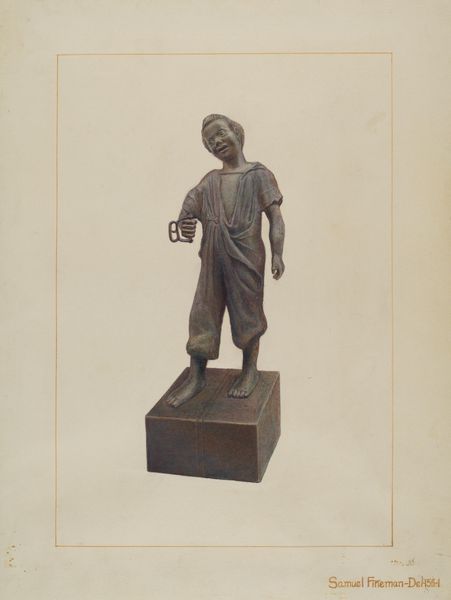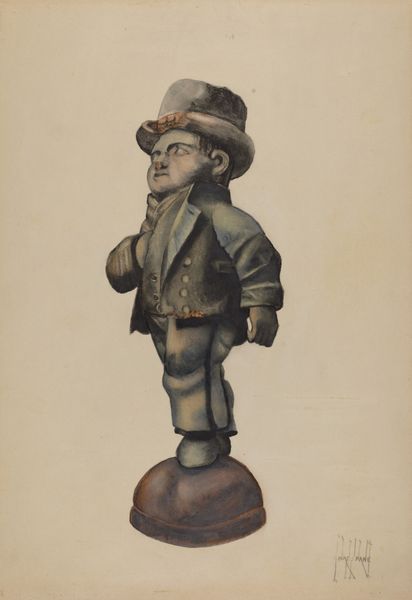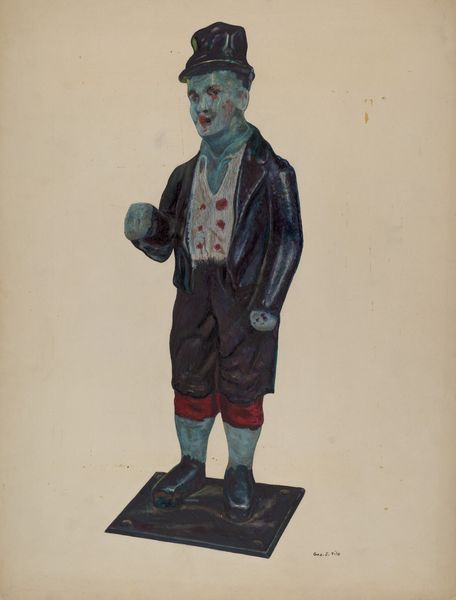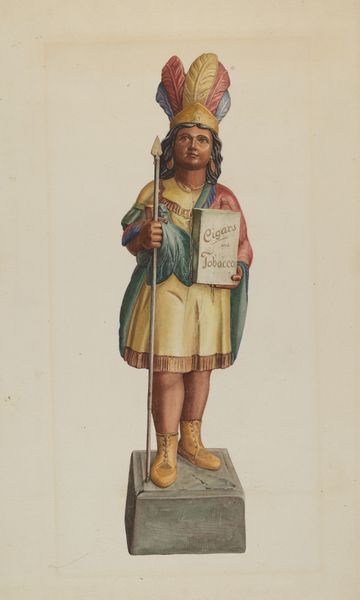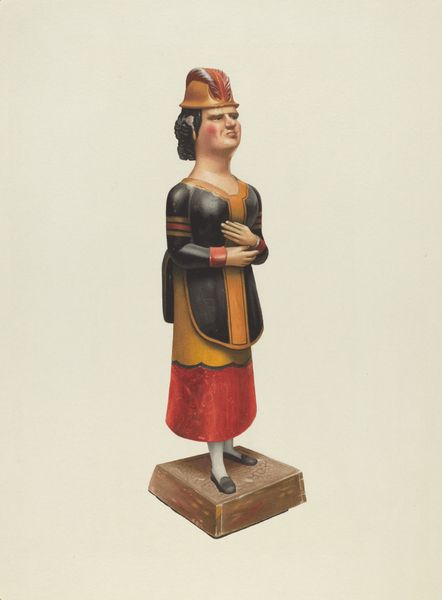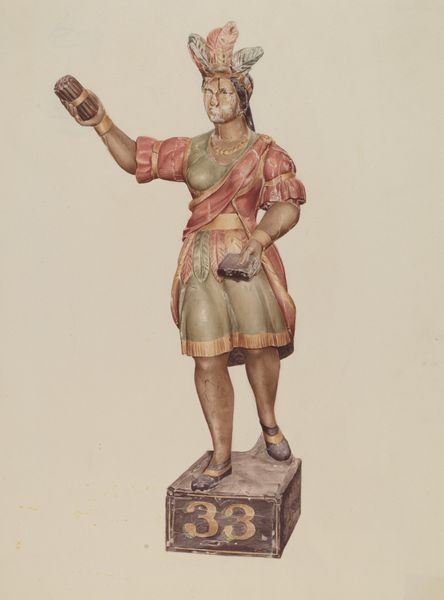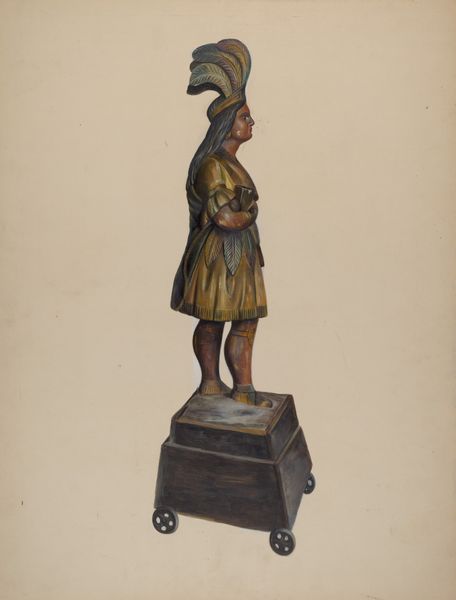
drawing, tempera, painting
#
portrait
#
drawing
#
tempera
#
painting
#
orientalism
#
academic-art
#
realism
Dimensions: overall: 48.7 x 30.6 cm (19 3/16 x 12 1/16 in.)
Copyright: National Gallery of Art: CC0 1.0
Curator: Good day. We’re here to examine “Iron Hitching Post,” a painting by George Constantine, circa 1940. The artist seems to have worked in tempera, perhaps also incorporating some drawing techniques. Editor: My first impression is one of stillness, almost a monumentality, despite its intimate scale. The figure's gaze is direct, almost confrontational, and the subdued palette contributes to a feeling of introspection. Curator: Indeed. There's a layered historical context to consider. While Constantine's "Iron Hitching Post" might appear straightforward, its realism flirts with Orientalism. Think about the implications: in the 1940s, images of people from non-Western cultures carried substantial political weight. How did such representations shape societal perceptions? Editor: That's interesting. You point to a deliberate construction, almost a stagecraft, which highlights a critical point: art doesn’t merely reflect reality, it actively shapes our understanding of the Other. Is Constantine commenting on Orientalist tropes, or complicit in them? Curator: It’s a fascinating tension, isn’t it? Let’s examine the symbol of the fan. Throughout history, fans served diverse purposes across many societies – from simple tools to combat the heat to status symbols. The man's stern expression seems to hint at suppressed agency, or perhaps cultural identity deliberately put on display. Editor: The work makes me consider the art market of the time. Academic art like this fed a specific collector base eager for images reflecting and reinforcing certain views of the world, views influenced by social, economic, and political agendas. The presentation almost renders the individual as an object—akin to the post. Curator: Right, this piece asks questions about appropriation, the commodification of cultural imagery, and the subtle yet potent influence of images in shaping social and political consciousness. Editor: I leave with more questions than answers, which speaks to its power. Curator: Agreed. A concise work that triggers complex reflections—a mirror on a bygone era, but still strikingly relevant to our contemporary gaze.
Comments
No comments
Be the first to comment and join the conversation on the ultimate creative platform.
